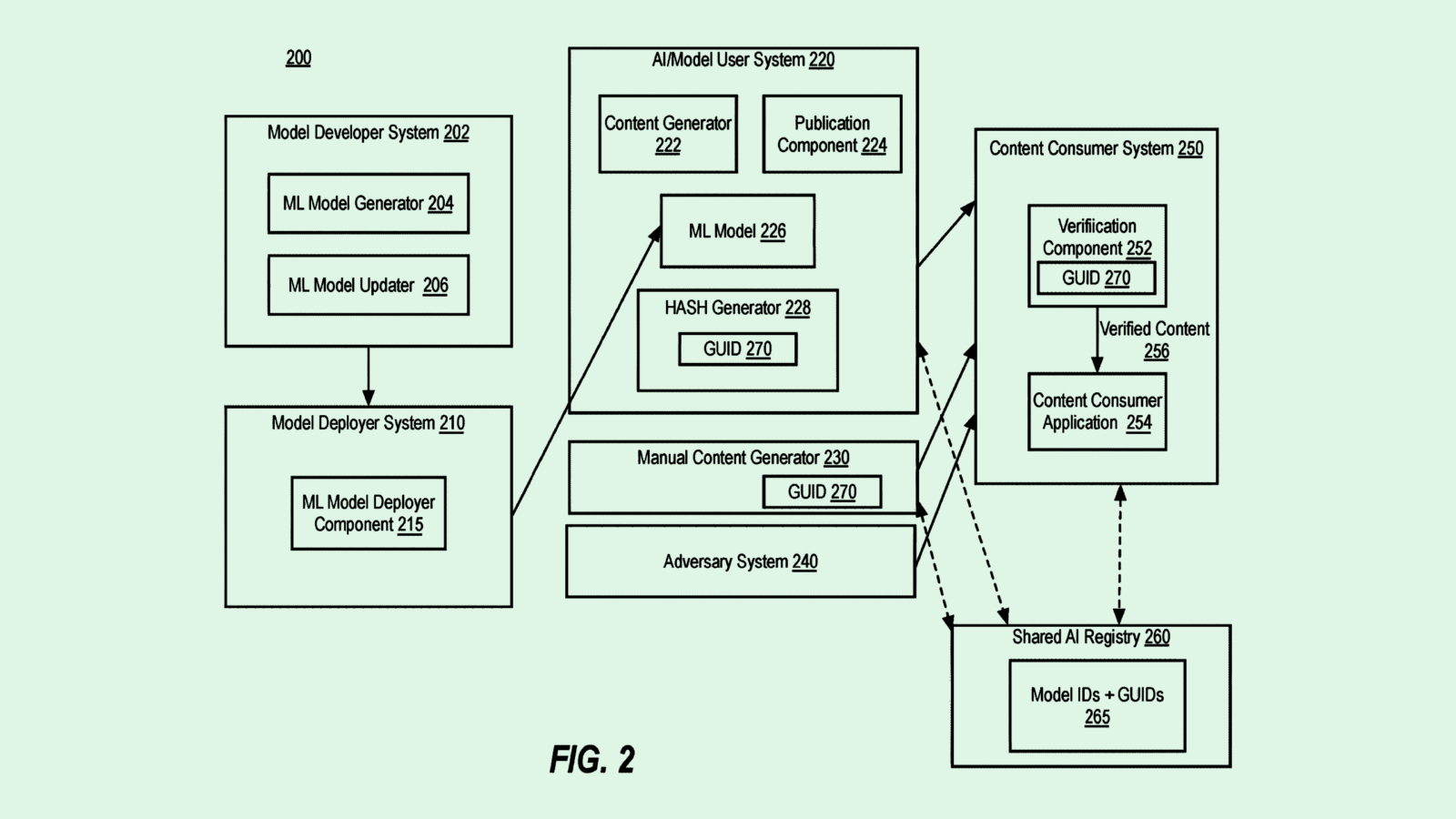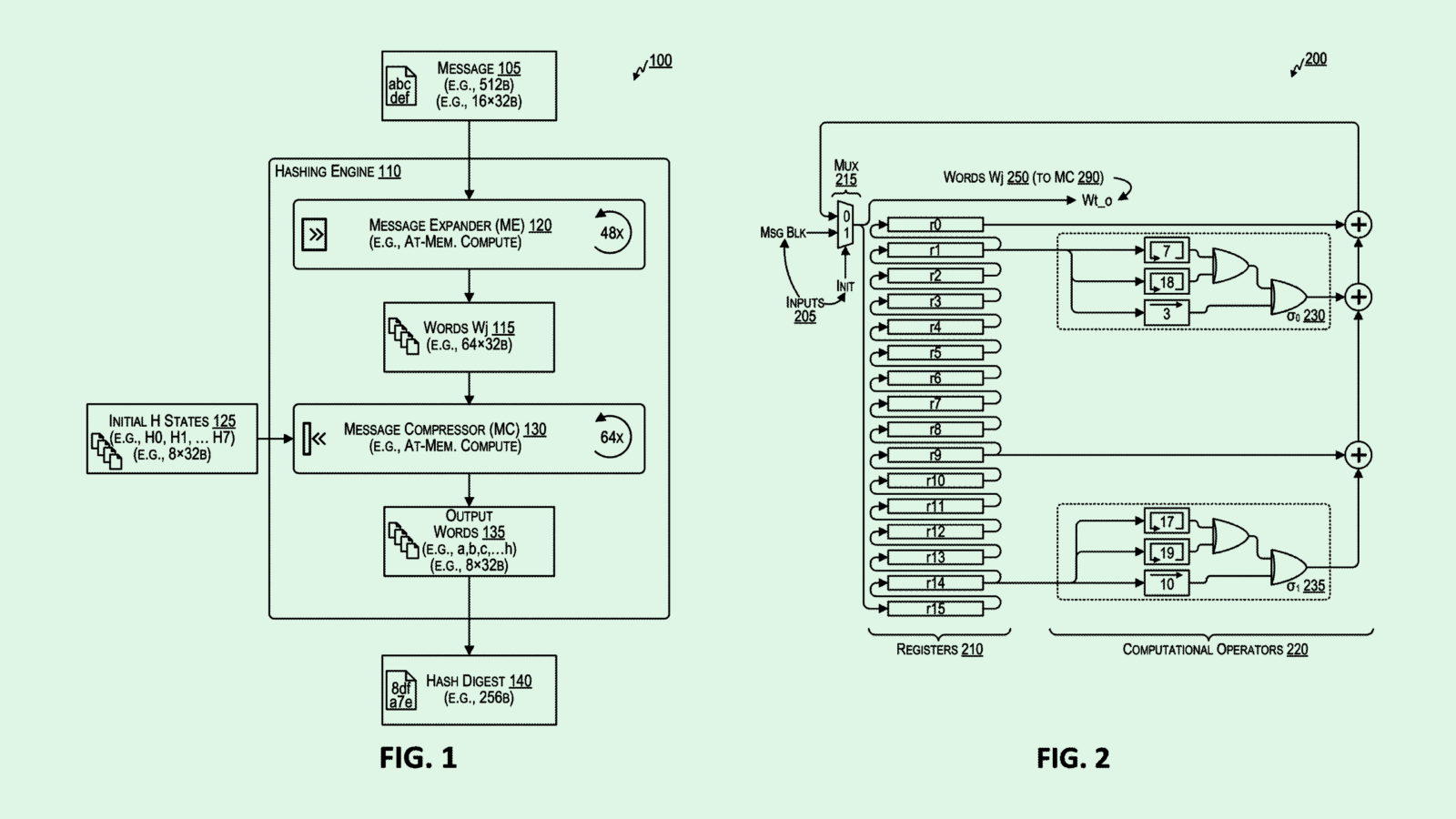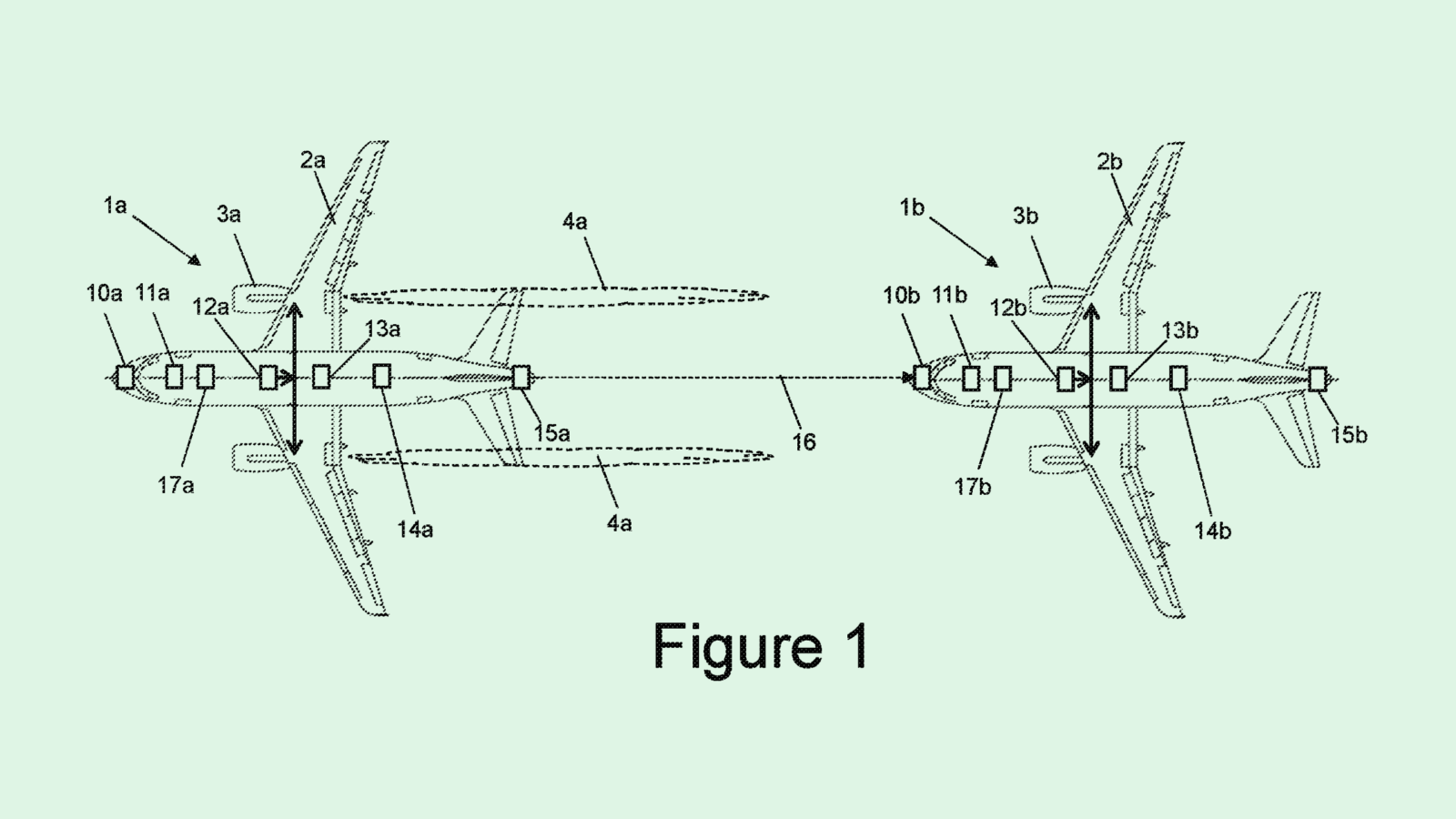Happy Thursday and welcome to Patent Drop!
Today, a patent from Intel to verify AI-generated content signals that tech firms may be paying attention to the consequences of their models. Plus: Block wants to make crypto a little greener, and Airbus wants to clean up its contrails.
But first, a word from our Sponsor, Sky Quarry: Around 15m tons of asphalt shingles are dumped in North America annually. Sky Quarry has developed a way to convert this waste into as many as 2,000 barrels of oil per day. See how you can become a private Sky Quarry shareholder as they turn trash into treasure.*
Let’s take a look.
Intel’s AI Verifier
Intel may be researching its own way to discern real from fake.
The company filed a patent application for “immutable watermarking for authenticating and verifying AI-generated output.” Aiming to improve transparency and traceability, Intel’s tech essentially sticks an unchangeable digital signature onto outputs generated by AI models.
“The exponential growth of AI has introduced the problem of determining the trustworthiness and consequently the reliability of information and/or data generated from AI sources,” Intel said in the filing. “Inability to distinguish between AI-generated output and human-generated output is leading to security and ethical risks.”
Intel’s system would give all content that passes through it a digital signature with a “globally unique identifier” of the AI model that created it. To differentiate, content created by actual humans may be assigned “generic” identifiers.
The system then verifies the extracted identifier against a trusted “shared AI registry,” which maintains a record of unique identifiers for lots of different AI models. Along with determining that the content is AI generated, Intel’s system traces back exactly which AI model the content may have come from.
Intel noted several potential implementations for this technology, including on a publishing platform with built-in watermarking to distinguish AI-generated publications from those by human authors and prevent the “publishing and/or consumption of unverified content.” Intel also said that this could work across a variety of media, including text, images, and video.

This isn’t the first time we’ve seen tech firms take an interest in catching AI-generated content: Sony previously filed a patent application for a way to use blockchain to mark deepfake content, and Nvidia sought to patent a way to watermark AI-generated audio.
Google upgraded its own invisible AI watermarking technology, called SynthID, to help track down generative text and video. OpenAI has reportedly had a similar method in the works for a year that’s “99.9% effective” and resistant to paraphrasing, according to The Wall Street Journal, but shelved rollout plans after users said they’d stop using the company’s models.
Despite OpenAI’s hesitance, AI watermarking tools could be an integral tool in identifying the source of realistic-looking — but ultimately synthetic — content, said Brian Green, director of technology ethics at the Markkula Center for Applied Ethics at Santa Clara University. “There’s been a huge question of how [we are] going to be able to tell real things from fake things in the future,” said Green.
The problem, however, is the rapid progression with which generative AI has skyrocketed, said Green. The wide availability of these platforms has given anyone the tools to easily create and spread misinformation. “The solutions didn’t come out fast enough,” said Green.
“This should have been a solution that was built into these generators before they launched,” Green said. “This is playing catch-up with something that they knew was going to be a problem. But at the same time, better late than never.”
The other problem is that watermarking AI-generated content itself may not be enough, said Green. As this patent hints, watermarks may need to be mandated for human-made content, too. “There are several other steps that need to be taken, and some of them may result in surveillance that maybe we don’t actually want to have.”
While Intel hasn’t been one of the AI companies to create widely-available generative models itself, its patent history is filled with inventions aimed at creating more ethical and responsible models. As the chip manufacturer struggles against the likes of Nvidia and AMD to maintain AI relevance, offering any tech that focuses on responsible AI could be a means of differentiating itself — and improving its image.
Turning Trash Into Treasure
Around 15m tons of asphalt shingles are dumped in North America annually. Sky Quarry has developed a way to convert this potentially toxic waste into valuable resources.
- $50M in revenue generated from their refinery in 2023.
- ~2,000 barrels of oil per day expected from their flagship extraction facility.
- Secured ‘SKYQ’ as their stock ticker.
The global push for sustainability is expected to drive the sustainable fuel market through the roof. Projections show a 1,500% rise by 2030, skyrocketing from $1 billion in 2023 to $16.8 billion.
Their previous funding round was oversubscribed at $18M, placing it in the top 1% of crowdfunding. Now they’re extending the opportunity to The Daily Upside readers.
Block’s Power-Saving Blockchain
Block may want to make its crypto transactions a little greener.
The fintech company filed a patent application for “computing architecture for energy-efficient hash computation.” For reference, a hash computation turns original data into a string of characters; they serve as a unique digital fingerprint. Though these are the foundation of a blockchain network, “traditional hashing techniques can use high levels of power,” Block noted in the filing.
“Use of distributed ledger technologies can often result in high levels of power consumption, to the extent there is some concern about potential climate impacts of the expanded use of distributed ledger technologies,” the filing said.
Block’s patent saves energy by pre-computing what’s known as “constants” — certain parts of the hash computation that are performed more than once — reducing the need for the system to run the same computation over and over again.
Block noted in the filing that this is particularly valuable for the “efficient mining for digital assets, such as bitcoin.” The company also claims that the power saving allows devices with “limited power reserves,” such as mobile devices, to access blockchain technology without burning through battery.

Block has long been deeply interested in blockchain: It changed its name from “Square” in 2021 to emphasize that point. The company bet on Bitcoin in particular, with the currency making up around 9% of its total cash, cash equivalents, and marketable securities in the first quarter.
Now, the company is taking aim at the crypto mining industry, inking a deal to provide chips to bitcoin mining firm Core Scientific in mid-July. “I’m fully confident and have no doubt that this is going to be a significant business for us and we’re going to take a majority of the market share,” CEO Jack Dorsey told analysts during the company’s recent earnings call.
But one of blockchain’s biggest hurdles is its energy consumption. And that roadblock has only gotten larger as demand has grown: Global energy consumption just from bitcoin mining doubled in 2023, reaching 141.2 terawatt hours.
Taking aim at this issue with a patent link this could not only help make crypto mining a little greener, but could ease the massive energy bills that blockchain creates, said Jordan Gutt, Web 3.0 Lead at The Glimpse Group. “At the end of the day, the organizations are the one footing the bill,” said Gutt.
“This is great from many perspectives — for the environment, for lower energy costs, it really gives them the ability to scale transaction volume,” said Gutt.
Airbus Clears the Clouds
Airbus wants to leave no trace.
The European aerospace manufacturer filed a patent application for “contrail suppression.” This tech essentially aims to clean up the white streaks, known as contrails, that airplanes leave behind during flight.
Because contrails let in solar radiation and trap heat in the Earth’s atmosphere, the seemingly innocuous streaks can contribute to climate change. To mitigate this effect, Airbus’ tech relies on a second aircraft to collect data about environmental conditions that would contribute to contrails.
This extra aircraft would essentially serve as a scout, using several sensors to collect data relating to atmospheric conditions, such as humidity and temperature, that contribute to generating contrails, as well as determine whether or not it created any contrails itself during flight. That data would then inform other aircraft about actions to avoid creating additional streaks.
For example, the aircraft may be alerted to switch to a sustainable fuel that is less prone to causing contrails as it “produces less soot,” said Airbus. It may also adjust the flight route to avoid areas where atmospheric conditions cause contrails.

Pollution caused by air travel accounts for roughly 2% of global carbon emissions, according to a 2022 report from the International Energy Agency. However, the warming effect caused by contrails magnifies the issue, their impact likely greater than that of aircraft emissions themselves.
“This issue of contrails is one that I think not a lot of people are aware of,” said Greg Smithies, partner and co-lead of the climate technology investment team at Fifth Wall. “But it’s always been the thinking that it’s kind of unavoidable. It was just kind of a given.”
Researchers, airlines, and tech firms have proposed using AI to solve the problem: Delta Airlines and MIT are developing an algorithm to forecast contrail creation using satellite information, aiming to reduce contrails by about 80%.
Though Airbus’ patent aims to mitigate the damages, it may do just as much harm as good, said Smithies. Because the proposed tech relies on a second aircraft to serve as a scout, that aircraft is, itself, creating contrails and burning jet fuel. Plus, navigating around contrail-prone areas increases flight time, he noted, thereby burning more jet fuel. “I would guess that the juice is not worth the squeeze on this,” said Smithies.
And stymieing aviation emissions is going to take more than just workarounds for contrails. The long-term solution is a larger transition toward sustainable fuel sources, Smithies said, such as hydrogen-based fuels. But that comes with its own challenges, namely the massive capital expenditure and a “10-, 20-, or 30-year time horizon.”
Extra Drops
- Google wants its voice assistants to recognize bias. The company filed a patent application for training “speech recognizers on biased transcriptions.”
- Honda wants to make sure you have the best lawn on the block. The automaker filed a patent for an autonomous lawnmower capable of “evaluating vegetation” and mowing appropriately.
- IBM wants to keep its data fresh. The company is seeking to patent a system for avoiding “data ROT,” or when data becomes “redundant, obsolete or trivial.”
What Else is New?
- Amazon’s $4 billion investment and partnership in AI firm Anthropic is being investigated by the U.K. Competition and Markets Authority.
- Defense tech firm Anduril raised $1.5 billion in Series F funding, bringing its valuation to $14 billion.
- Learn AI in 5 Minutes a Day. AI Tool Report is one of the fastest-growing and most respected newsletters in the world, with over 550,000 readers from companies like OpenAI, Nvidia, Meta, Microsoft, and more. Their research team spends hundreds of hours a week summarizing the latest news, and finding you the best opportunities to save time and earn more using AI. Sign up with 1-Click.**
** Partner
Patent Drop is written by Nat Rubio-Licht. You can find them on Twitter @natrubio__.
Patent Drop is a publication of The Daily Upside. For any questions or comments, feel free to contact us at patentdrop@thedailyupside.com.
Disclaimer
*This is a paid advertisement for Sky Quarry’s Regulation A Offering. Please read the offering circular at investor.skyquarry.com

